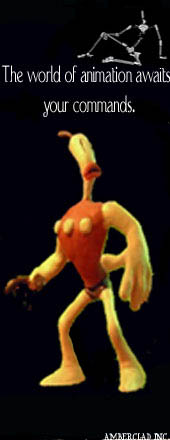
An armature is essential in creating a stop-motion puppet that is capable of animation. An armature is the skeleton that holds together the puppet. Not only does an armature hold the puppet together, it also keeps it in the correct pose. This is very important.

The best (and most expensive) armature is the ball and socket. These are constructed of (if you hadn't guessed) metal ball and socket joints, and they seem work quite well. Most pro studios like Aardman use the ball and socket type armatures. However, because each piece on a ball and socket is made by hand, they can get quite pricey. You can buy lower-end ball and socket armatures for pretty good prices here.
 Brass tube armatures are made of wood, wire, metal, and bass tubing. These are really nice because they allow you to remove and replace certain parts of the armature, such as hands, feet, heads, and so on. Unfortunately, I'm not aware of any retailers who offer these armatures. If you're interested in learning how to make a brass tube armature, check out Marc Spess's DVD How to Make Aluminum Wire Armatures.
Brass tube armatures are made of wood, wire, metal, and bass tubing. These are really nice because they allow you to remove and replace certain parts of the armature, such as hands, feet, heads, and so on. Unfortunately, I'm not aware of any retailers who offer these armatures. If you're interested in learning how to make a brass tube armature, check out Marc Spess's DVD How to Make Aluminum Wire Armatures. Most amateur animators (such as myself) use wire armatures made from 1/16-inch aluminum wire. They work really well and are relatively easy to make! heres a picture that shows some of the parts on a stop-motion wire armature here . Marc Spess again made a nice vid (available on YouTube) showing the basics of armature making(Look below)
Most amateur animators (such as myself) use wire armatures made from 1/16-inch aluminum wire. They work really well and are relatively easy to make! heres a picture that shows some of the parts on a stop-motion wire armature here . Marc Spess again made a nice vid (available on YouTube) showing the basics of armature making(Look below)







